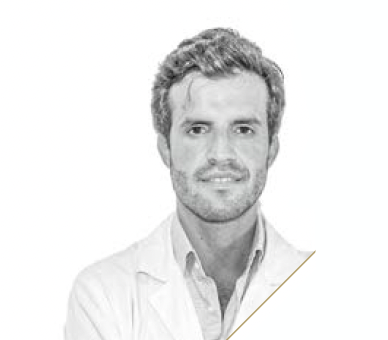Dr Jesús Olivas-Menayo
A ligament-based anatomic technique for lower face and neck rejuvenation using bipolar radiofrequency
Minimally invasive treatments have gained ground by delivering good results with shorter recovery times compared to traditional surgeries. “Weekend procedures” are trending, where a patient undergoes an intervention on a Friday and can resume regular activities by Monday. The increasingly hectic pace of life has forced plastic surgery to adapt, reducing recovery times with more precise protocols and techniques.
 At the beginning of 2022, I had the opportunity to publish an article on my MICRO-lift technique in one of the most important international journals in Plastic, Reconstructive and Aesthetic Surgery, Aesthetic Plastic Surgery. It has also been presented at prestigious conferences such as the international AECEP meeting held in Madrid in late November, The Aesthetic Society Meeting de Miami, ImCas Paris 23 and in the 13th European Congress of Aesthetic Medicine, in Cascais. This minimally invasive cervicofacial rejuvenation technique performed with FaceTite and Morpheus8, by InMode is in line with the new demands of today’s society.
At the beginning of 2022, I had the opportunity to publish an article on my MICRO-lift technique in one of the most important international journals in Plastic, Reconstructive and Aesthetic Surgery, Aesthetic Plastic Surgery. It has also been presented at prestigious conferences such as the international AECEP meeting held in Madrid in late November, The Aesthetic Society Meeting de Miami, ImCas Paris 23 and in the 13th European Congress of Aesthetic Medicine, in Cascais. This minimally invasive cervicofacial rejuvenation technique performed with FaceTite and Morpheus8, by InMode is in line with the new demands of today’s society.
MICRO-lift: DOES IT WORK?
MICRO-lift is an acronym for minimally invasive, combined radiofrequencies, outpatient-lift. This means it is a minimally invasive technique that uses a combination of FaceTite radiofrequency to perform ambulatory cervicofacial lifting. This innovative treatment eliminates sagging in the lower thirds of the face and neck without creating scars, unlike traditional facelifts. Facetite, a thin, gold-coated bipolar fractional radiofrequency cannula is inserted through five 2mm incisions located near the sideburns, behind the earlobe, and on the chin. This radiofrequency heats tissues from depth, reaching temperatures up to 65°C, down to the surface where temperatures reach around 40°C, causing subdermal coagulation responsible for tissue contraction. Additionally, tissue heating stimulates fibroblasts, the main cells responsible for collagen and elastin production, found in greater proportions in ligamentous regions.
The procedure is performed with conscious sedation controlled by an anaesthetist, ensuring the patient is comfortable throughout the process, experiencing a very pleasant procedure. Once the patient is sedated, a solution of saline mixed with adrenaline and local anaesthetic is infiltrated into the area to be treated, reducing discomfort and the likelihood of bleeding. Following this, the aforementioned incisions are made. While the lower third of the face is treated through sideburn incisions, the entire neck is treated from the submental and retrolobular areas.
 Through the incisions, Facetite, by InMode, a fine fractional bipolar radiofrequency tip is introduced, treating deeper tissues. FaceTite has sensors minimising the risk of burns. This, combined with being a fractional bipolar radiofrequency, reduces complications compared to older devices, unlike other devices with monopolar energies. Before finishing the procedure, I perform several passes with Morpheus8, the InMode-assisted fractional bipolar radiofrequency with microneedling, throughout the treated area. This treatment helps improve the skin’s texture, and in combination with FaceTite, it enhances the effectiveness of the result, providing that extra improvement to the external appearance of the skin. The procedure lasts about an hour and a half, and once completed, the patient can go home. Social recovery usually begins around day 7 progressively. Postoperative care includes wearing a chinstrap 24 hours a day for the first 5 days, followed by 12 hours a day (including sleep hours) for an additional 10 days.
Through the incisions, Facetite, by InMode, a fine fractional bipolar radiofrequency tip is introduced, treating deeper tissues. FaceTite has sensors minimising the risk of burns. This, combined with being a fractional bipolar radiofrequency, reduces complications compared to older devices, unlike other devices with monopolar energies. Before finishing the procedure, I perform several passes with Morpheus8, the InMode-assisted fractional bipolar radiofrequency with microneedling, throughout the treated area. This treatment helps improve the skin’s texture, and in combination with FaceTite, it enhances the effectiveness of the result, providing that extra improvement to the external appearance of the skin. The procedure lasts about an hour and a half, and once completed, the patient can go home. Social recovery usually begins around day 7 progressively. Postoperative care includes wearing a chinstrap 24 hours a day for the first 5 days, followed by 12 hours a day (including sleep hours) for an additional 10 days.
Reflection
Plastic surgery and aesthetic medicine are undergoing a significant revolution due to the innovations the industry is developing. Advances in understanding cervicofacial anatomy and microanatomy have allowed us to identify areas with a higher concentration of fibroblastic cells, responsible for collagen production—a crucial molecule in tissue aging. Stimulating these areas allows the body to replenish its collagen, rejuvenating itself. Therefore, the future of aesthetic medical treatments lies in understanding how to stimulate the regenerative mechanisms of the human body. In this sense, the MICRO-lift protocol stimulates these areas, allowing tissues to contract and rejuvenate endogenously—through the body’s own biological mechanisms that are well-known. The use of radiofrequencies inside the body is not a new concept; for years, orthopedic surgeons have used them to contract stretched ligaments, especially in certain joint instabilities.
In this case, the procedure is similar, except that instead of contracting joint or muscle ligaments with large radiofrequency devices, we are contracting small cervicofacial ligaments, responsible for facial and neck aging, with very small devices. Endogenous regeneration implies that numerous factors can influence the final result. Smokers, individuals with excessively sun-exposed skin, collagen disorders, or extreme sagging may have more limited results.
Initial cervicofacial lifts left large scars running from the forehead to the occipital region. The introduction of botulinum toxin and the development of endoscopic and minimally invasive techniques to improve the appearance of the upper third allowed limiting incisions of these procedures to pre- and retroauricular regions. Subsequently, short scar facelift techniques (also known as minilifts), with incisions only in front of the ear, were developed. Now, with the introduction of MICRO-lift, incisions are further reduced to 5 entry points that are practically invisible, allowing access to the entire lower third of the face and neck, considered a single aesthetic unit.
 Dr Jesús Olivas-Menayo: Plastic, Reconstructive, and Aesthetic SurgeonAuthor of over 20 scientific articles and book chapters.Speaker at over 50 national and international conferences. BodyTite International KOL
Dr Jesús Olivas-Menayo: Plastic, Reconstructive, and Aesthetic SurgeonAuthor of over 20 scientific articles and book chapters.Speaker at over 50 national and international conferences. BodyTite International KOL
More informations: msmedicalinstitutes.com










